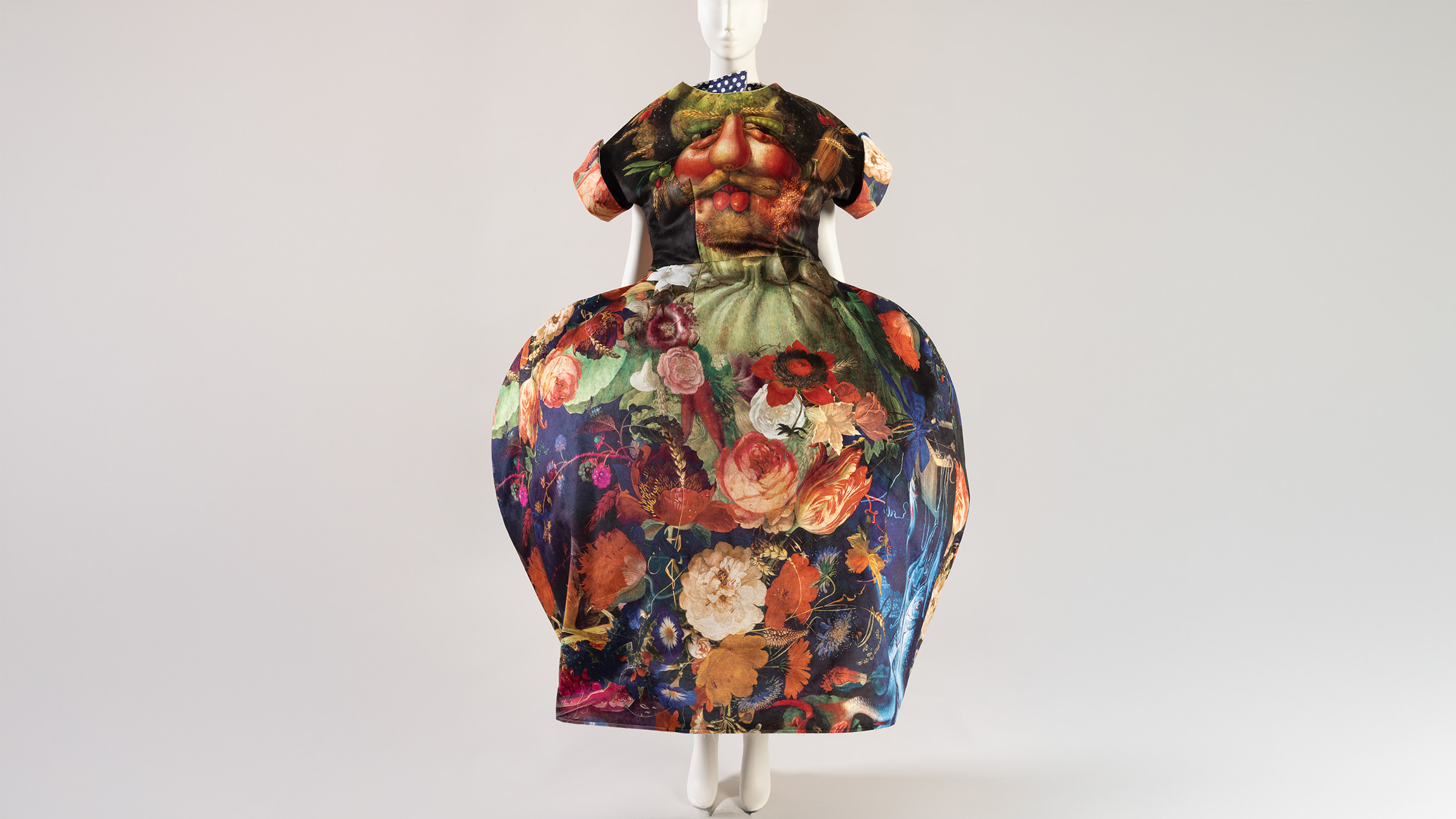Fashioning Wonder: Cabinets of Curiosity, the newest exhibition at The Museum at FIT, provides the first in-depth exploration of the fascinating connections between fashion and cabinets of curiosity. Wunderkammern, or “cabinets of curiosities,” emerged in the 16th century as precursors to modern museums, gathering rare and intriguing artifacts from around the world. These collections often included textiles and fashion, demonstrating the global influence of style and craftsmanship. Fashioning Wonder examines this legacy, presenting fashion through the lens of curiosity, collecting, and creativity.
The pieces on view, many of which are being displayed for the first time, reflect the rarity, beauty, and originality of objects found in these early collections. Featuring more than 200 garments and accessories mostly from the museum’s extensive collection, Fashioning Wonder showcases designers such as Dior, Schiaparelli, Pucci, and Vivienne Westwood, among many others.
Curated by MFIT Curator Dr. Colleen Hill, the exhibition is organized into 10 thematic sections:
Specimens illustrates fashion inspired by natural history, including a 2013 Tom Ford gown intricately beaded in a zebra pattern with a horsehair “mane.”

A striking central birdcage displays feathered objects in Aviary, such as a table vividly adorned with feathers by Bill Cunningham, on view for the first time.
Designs influenced by the human form appear in Anatomical Theatre, including a 2013 Arzu Kaprol dress made from metallic leather with a cut-out skeletal design.
A celebration of fine craftsmanship, Artisanship features miniature fashion objects and historical dressmaking tools that can be admired for their intricate handicraft.
Kunstkammer (“Chamber of Art”) fuses fine art and fashion, including a 2018 Comme des Garçons dress printed with the 1591 painting “Vertumnus” by Giuseppe Arcimboldo.
Inspired by 17th-century paintings, Vanitas explores themes of mortality and luxury, including a pair of Sophia Webster’s elegant butterfly shoes, representing the fragility of life.

Reflections and Refractions comprises objects embellished with shimmering materials, such as a 1996 dress by CD Greene, designed for Tina Turner, with rhinestones and mirrors.
Illusions features a 1955 dress by Pucci, made from the label’s impressively convincing “visone” (mink) printed silk, complete with “tails” edging the skirt hem.
The last sections are intended for audience interaction, an important aspect of experiencing the early cabinets of curiosities. In What Is It? visitors are encouraged to engage with historical fashion objects, test their knowledge, and experience the sounds and construction of select pieces.
Finally, The Senses includes a touchable replica of a c. 1948 Molyneux dress (made by Katherine Shark, a graduate student in FIT’s MA Fashion and Textile Studies program), shown alongside the original object.
The exhibition is on view at The Museum at FIT in New York City through April 20.
To learn more, visit fitnyc.edu/museum.



